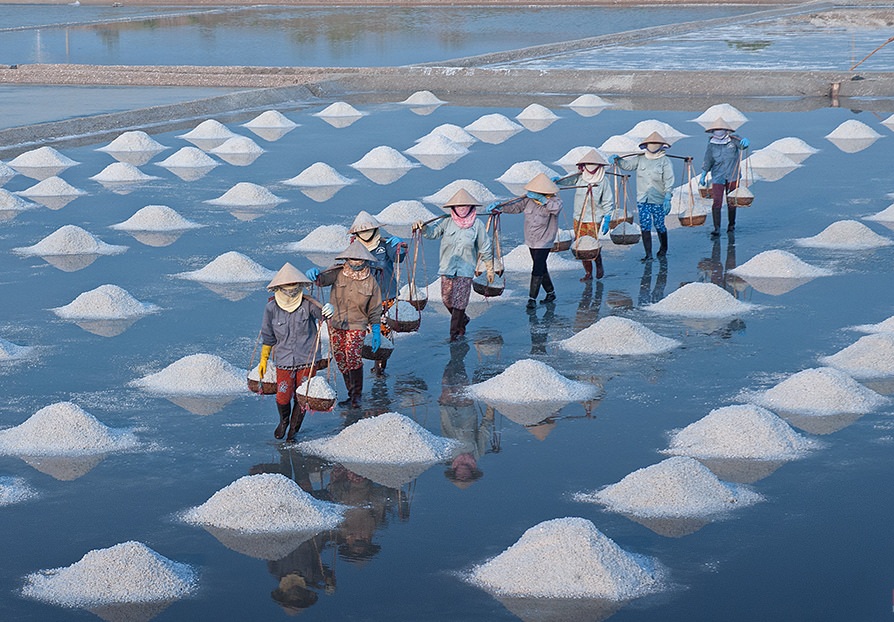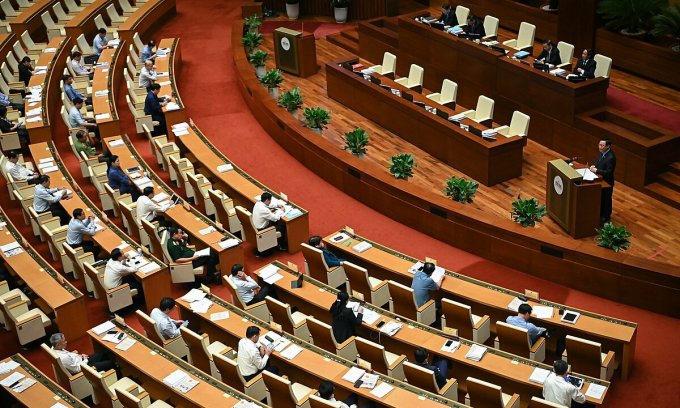Which soil group does land for salt production belong in Vietnam?

In Vietnam, salt making is a marine economic profession that plays an important role in the economy of coastal localities. There are villages that make salt, and salt becomes their main product. The people who make salt will be called the salt people. So about the matter “Which soil group does land for salt production belong in Vietnam?” Let’s find out with LSX in the article below.
Legal grounds
- Land Law 2013
- Circular No. 27/2018/TT-BTNMT
What is soil classification?
Land classification is the division of land into different groups of land, based on land use purposes. According to Article 10 of the 2013 Land Law, there are currently three groups of land: agricultural land, non-agricultural land and unused land.
Meaning of soil classification
Land is an asset class with specific management regulations. Therefore, the classification of land has a certain importance, both economically and socially.
Firstly, in economic terms, the classification of land helps land users determine the right type of land, thereby improving land use efficiency and properly fulfilling their financial obligations on land to the State. contribute to increase the state budget, promote economic development.
Secondly, in terms of society, the classification of land makes it convenient for the State to unify and manage land across the country. Since then, the State has policies for each specific type of land, contributing to social stability and development.
The determination of land type under Vietnam law
Article 11. Grounds for determining land type
The determination of land type is based on one of the following bases:
1. Certificates of land use rights, certificates of house ownership and residential land use rights that were issued before December 10, 2009; Certificates of land use rights, ownership of houses and other land-attached assets;
2. Papers on land use rights specified in Clauses 1, 2 and 3, Article 100 of this Law, for cases where the Certificate has not been granted as prescribed in Clause 1 of this Article;
3. A competent state agency’s decision on land allocation, land lease or permission to change the land use purpose, for cases where the Certificate has not been issued as prescribed in Clause 1 of this Article;
4. For cases where the papers specified in Clauses 1, 2 and 3 of this Article are not available, the determination of land type shall comply with the Government’s regulations.
Classification of land according to the Land Law
Based on land use purposes, Article 10 of the 2013 Land Law has classified land into 03 groups as follows:
*Agricultural land group
According to Section I, Appendix 01 issued together with Circular No. 27/2018/TT-BTNMT dated December 14, 2018 of the Minister of Natural Resources and Environment, providing for statistics, land inventory and mapping. At present, agricultural land group is understood as land used for production, research and experiment in agriculture, forestry, aquaculture, salt making and forest protection and development purposes. ; including agricultural production land, forestry land, aquaculture land, salt-making land and other agricultural land (including land used for plot banks, plot banks located in the land area of a land user for service for the subject’s agricultural purposes).
Accordingly, the agricultural land group includes the following types of land:
– Annual crop land:
– Land for perennial crops:
– Production forest land
– Protective forest land
– Special-use forest land
– Aquaculture land
– Salt-making land
– Other agricultural land
*Non-agricultural land group
Includes the following soil types:
a) Residential land includes residential land in rural areas and residential land in urban areas;
b) Land for construction of the agency’s headquarters;
c) Land used for defense and security purposes;
d) Land for construction of non-business works, including land for construction of offices of non-business organizations; land for construction of cultural, social, medical, educational and training facilities, physical training and sports, science and technology, diplomacy and other non-business works;
dd) Non-agricultural production and business land, including land in industrial parks, industrial clusters, and export processing zones; commercial and service land; land for non-agricultural production establishments; land used for mineral activities; land for production of building materials and pottery;
e) Land used for public purposes, including land for traffic (including airports, airfields, inland waterway ports, seaports, railway systems, road systems and other traffic works); irrigation; land with historical – cultural relics and scenic spots; land for community activities, public amusement and entertainment areas; land for energy works; land for post and telecommunications works; market land; land for disposal, waste treatment and other public works;
g) Land for religious and belief establishments;
h) Land for cemeteries, graveyards, funeral homes, crematoriums;
i) Land of rivers, streams, canals, canals, streams and specialized water surface;
k) Other non-agricultural land, including land for rest houses, shacks and camps for workers in production establishments; land for construction of warehouses and houses to store agricultural products, pesticides, fertilizers, machinery and tools in service of agricultural production and land for construction of other works of non-land users *Unused land group
According to Section 3, Appendix 01 issued together with Circular No. 27/2018/TT-BTNMT, the group of unused land is land that has not been put to use for the purposes prescribed by the Land Law, including unused flat land, unused hilly land, rocky mountains without forests.
In there:
Unused flat land is unused land in flat areas in plains, valleys and plateaus.
Unused hilly land is unused land on sloping land in hilly and mountainous areas.
Rocky mountains without forests are unused land in the form of rocky mountains on which there are no forests.
Thus, unused land group is land that has not yet met the conditions or has not been determined to be used for the purposes of agricultural production, aquaculture or forestry. urban, specialized use and the State has not yet assigned to organizations, households and individuals for stable and long-term use.
Which soil group does land for salt production belong in Vietnam?
This type of land was formerly classified as special-use land, but due to the fact that land is used for salt production, it is similar to the use of agricultural land. industry in coastal rural areas.
Therefore, in the 2003 Land Law and now the 2013 Land Law, salt-making land is included in the agricultural land group.
According to Article 138 of the 2013 Land Law, salt land is used as follows:
Land for salt production is allocated by the State to households and individuals within the local land allocation quota for salt production. In case of exceeding the limit, the land must be changed to leased land.
– Land for salt production is leased by the State to economic organizations, overseas Vietnamese or foreign-invested enterprises to implement investment projects on salt production.
– High-yield, high-quality salt-producing lands must be protected and prioritized for salt production.
– The State encourages the use of land capable of making salt to produce salt for industrial and life needs.
Services of LSX
Prestigious professional services: Firstly, the team of consultants and consultants for many years in the field of civil status, and customer support.
On-time: Certainly, with the motto “Get your lawyer right at your fingertips”, we ensure the service always performs on time. The rights and interests of customers always come first.
Cost: Besides, LSX’s service costs are highly competitive; depending on the nature of the particular case. So, we want our guests to have the best possible service experience. Therefore, costs which guaranteed to be the most suitable and economical for customers.
Confidentiality of client information: Finally, all brand information of client LSX will be 100% confidential.
Please contact us immediately if you have any questions about “Which soil group does land for salt production belong in Vietnam?”
Contact LSX
Finally, hope this article is useful for you to answer the question about “Which soil group does land for salt production belong in Vietnam?” If you need any further information, please contact LSX Law firm: at +84846175333 or Email: [email protected]
Please see more
- Where to pay non-agricultural land tax under Vietnam law?
- Guidance on how to calculate residential land tax in Vietnam
- Land acquisition for national security and defense in Vietnam
Frequently asked questions
Responsibilities of organizations, households and individuals using land for salt production in the planning as prescribed in Article 7 of Decree No. 40/2017/ND-CP include:
“1. Use for the right purposes according to the master plan and plan on the use of land for salt production already approved by the competent authority.
Organize salt production according to planning, apply technical advances to improve salt production efficiency and protect the ecological environment.
Do not leave wasteland, do not pollute the land.
Do not use untreated polluted water sources for salt production and processing; do not discharge waste and wastewater that pollute the environment and have solutions to combat salinization of the soil and groundwater environment around salt production and processing areas.
To exercise their rights and perform their obligations within the time limit for using land for salt production in accordance with the land law and relevant laws.
The State encourages and supports investment in the improvement of manual salt-making land into industrial-scale salt-making land in the planning.”
Accordingly, one of the responsibilities of households when using land for salt production in the planning is not to leave the land uncultivated and not to pollute the land.
Therefore, households that are allocated land for work are not entitled to leave the above land uncultivated.
Step 1: Prepare all documents as prescribed by law.
Step 2: Submit the application at the receiving and result-returning section of the People’s Committee of the commune or town where the land is located (during office hours from Monday to Saturday every week).
Step 3: The People’s Committee of the commune or township transfers the application file to the District Department of Natural Resources and Environment to check the dossier:
In case the application is valid (the application has all documents according to the procedures and is fully declared according to regulations), the specialist receiving the application will sign the delivery note made by the People’s Committee of the commune or township.
In case the dossier is not valid, the expert who receives the dossier shall provide instructions and write down all the contents once in writing so that the officer of the People’s Committee of the commune or township has grounds to guide the applicant in supplementing the application. rule.
Based on the processing authority and the appointment date to return the dossier, the district Division of Natural Resources and Environment shall transfer the dossier to the People’s Committee of the commune or township for return results.
Step 4: Receive results at the Department of receiving and returning results of the People’s Committee of communes and towns in the district (where the land is located).
Method of implementation: Directly at the headquarters of state administrative agencies.
In the provisions of Article 8 of Circular No. 24/2014/TT-BTNMT, the dossier is submitted when carrying out the procedures for registration and issuance of a certificate of land use rights and ownership of houses and other land-attached assets for the first time. Head includes:
– An application for registration and issuance of a certificate of land use rights and ownership of houses and other land-attached assets, made according to the form
– One of the papers specified in Article 100 of the Land Law and Article 18 of Decree No. 43/2014/ND-CP for registration of land use rights
– One of the documents specified in Articles 31, 32, 33 and 34 of Decree No. 43/2014/ND-CP for registration of ownership of land-attached assets
Proof of fulfillment of financial obligations; papers related to the exemption or reduction of financial obligations on land and land-attached assets (if any)
Thus, when issuing a certificate of land use right for salt production, it is necessary to have all the documents and follow the legal procedures.
Conclusion: So the above is Which soil group does land for salt production belong in Vietnam?. Hopefully with this article can help you in life, please always follow and read our good articles on the website: lsxlawfirm.com




